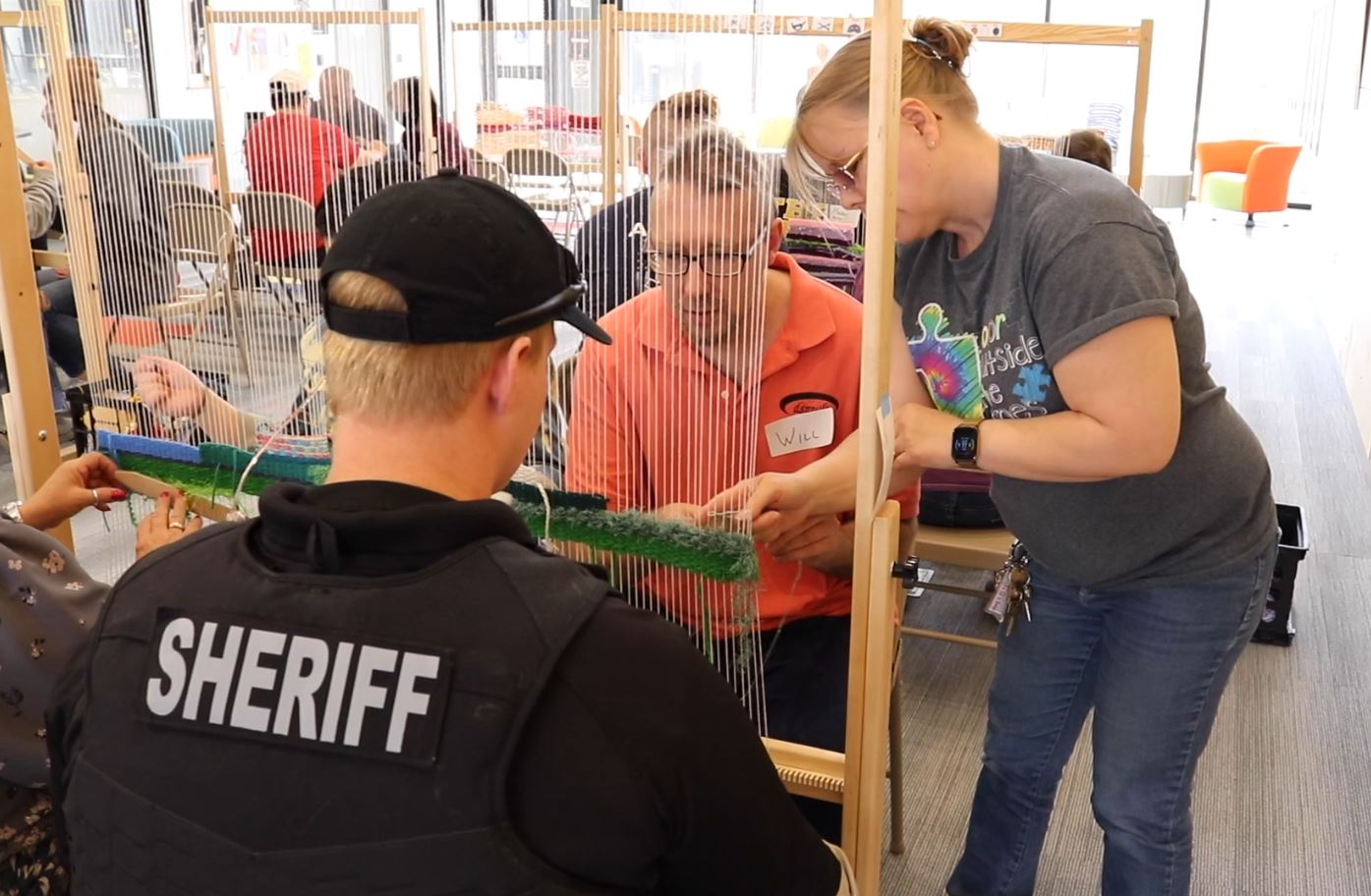BY ALICIA FEYERHERM
The second session of the First Responder, Art, Collaboration, Training (FACT) workshop took place last week in the atrium of the Schmidt Art and Design building.
The session started out with art professor Amy Schmierbach giving a presentation to the First Responders.
For the last five or six years, Fort Hays art students have created projects with individuals with cognitive disabilities.
“We have been transformed by the experience,” Schmierbach said. “We wanted to bring that to everyone.”
Part of Schmierbach’s advocacy comes from having a son with autism.
“That has started me on a different trajectory in my life and in my teaching to create more opportunities for people like my son and more acceptance,” Schmierbach said.
The project has now expanded to include not only art students and individuals with cognitive disabilities, but also first responders.
“The main reason we have the first responders come is because it’s more likely that a person with a disability will need their help than someone without a disability,” Schmierbach said.
Persons with disabilities are 2.5 times more likely to experience violence and the highest rates of violence were against persons with cognitive disabilities. Bringing together all these people, empathy, trust and friendship can be built in a more relaxed environment.
“When we see them in our work, it’s typically not at the best of times and we can be kind of a scary force or a scary noise and a scary presence for a lot of these people,” Ellis County AEMT Kody Niblok said.
Niblock says he encounters individuals with cognitive disabilities frequently in his work and even recognized one of the participants.
“It’s nice seeing her when she’s not in the back of my ambulance,” Niblock said.
Beyond conversation, education is also key.
Some of the root causes of violence against persons with cognitive disabilities include:
- They may not be able to recognize danger
- Not able to protect themselves
- Not able to obtain assistance within the criminal justice system
- Misinterpret social cues
- A desire for acceptance
- Dependent on others for personal care
When faced with dangerous situations, individuals with cognitive disabilities may react differently than what first responders are used to. They may experience sensory overload or experience a meltdown.
Schmierbach had a few tips for communicating with a person with a cognitive disability:
- Use simple and direct language
- Be literal and specific
- Avoid slang
- Communicate the plan- use first, then last language
- For example:
- First, I am here to help you
- Then, I will check to make sure you are not hurt
- Last, I will bring you home
- For example:
However, Schmierbach emphasizes that everyone is different.
“There isn’t a one-size-fits-all approach,” Schmierbach said. “Every single person with a disability is different and might react differently, but being aware of these best practices can be helpful.”
In stressful situations, individuals with cognitive disabilities may repeat words or phrases.
“Just because they repeat what you say, does not mean they necessarily understand what you are saying,” Schmierbach says. “In that situation, getting them to a quiet spot where there is less sensory sound or sight, they may be able to calm down and communicate with you.”
Niblock found the workshop very helpful and hopes more people get involved.
“I love projects like these and really hope we continue doing them- for everybody- law enforcement, fire department, EMS, the general public- it’s a really good idea,” Niblock said.
The third session will take place from 3:30 to 5:30 p.m. on Wednesday and the last session will be 10 a.m. to noon on April 21.

